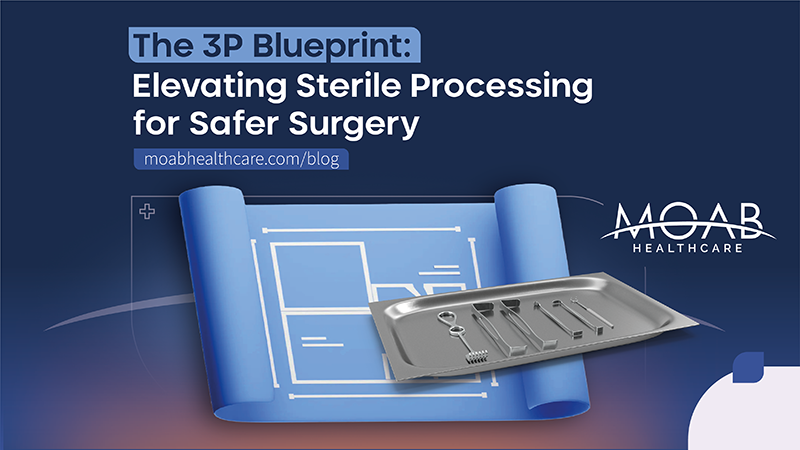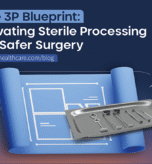The 3P Blueprint: Elevating Sterile Processing for Safer Surgery
Introduction: The Unsung Heroes Behind Safe Surgery
When we think of patient safety, our minds often go to surgeons, nurses, and physicians. But behind every successful procedure is a team of highly skilled professionals working in the Sterile Processing Department (SPD)—the backbone of surgical readiness. These technicians ensure that every instrument is clean, sterile, and ready for use, protecting patients from infection and complications.
In this edition, we explore a strategic framework behind Moab Healthcare’s Proprietary 3P Method: People, Process, and Protection—a powerful educational model for optimizing SPD operations and elevating patient safety. Whether you’re a healthcare leader, educator, or SPD Technician, this approach offers actionable insights to strengthen your department and improve outcomes.
People: Empowering the Frontline of Sterile Processing
The first pillar of the 3P Method is People—the trained professionals who ensure surgical instruments are safe and sterile.
- Training & Certification
- Investing in education through programs like IAHCSMM or CBSPD enhances technical skills, boosts morale, and reduces turnover.
- Certified technicians are more likely to follow protocols, catch errors, and maintain compliance with regulatory standards.
- Smart Staffing & Scheduling
- Understaffed SPDs face delays and increased error rates. Aligning staffing with workload patterns ensures timely instrument processing and supports surgical efficiency.
- Culture of Accountability
- Recognition programs, peer audits, and performance reviews foster a sense of ownership and pride.
- When SPD staff feel valued, they are more vigilant and consistent in their work.
Process: Streamlining Workflows for Accuracy and Efficiency
The second pillar, Process, focuses on refining systems to reduce variability and eliminate waste.
- Standardization & Lean Practices
- Lean tools like 5S (Sort, Set in order, Shine, Standardize, Sustain) help organize workspaces and reduce errors.
- Standardized procedures across shifts ensure consistent outcomes and faster turnaround.
- Technology Integration
- Automated washers, instrument tracking software, and RFID tagging improve traceability and reduce manual errors.
- These tools also support compliance and readiness by monitoring each instrument’s journey.
- Continuous Improvement
- Data analytics on tray turnaround times, error rates, and equipment downtime help identify bottlenecks.
- Feedback loops and regular audits drive ongoing optimization.
Protection: Safeguarding Instruments, Staff, and Patients
The third pillar, Protection, ensures SPD operations are safe, compliant, and resilient.
- Infection Control & Compliance
- Adherence to standards from AAMI, CDC, and OSHA is essential.
- Proper PPE usage, sterilization validation, and environmental monitoring reduce infection risk.
- Equipment Maintenance
- Preventive maintenance and calibration of washers and sterilizers ensure consistent performance.
- Malfunctioning equipment can compromise sterilization and endanger patients.
- Risk Management
- Contingency plans for equipment failure or supply chain disruptions help maintain continuity of care.
- Emergency preparedness and scenario planning are vital for resilience.
Integrating the 3Ps: A Holistic Approach to SPD Excellence
When People, Process, and Protection work in harmony, SPD becomes a high-performing engine of patient safety:
- A certified technician using standardized workflows on well-maintained equipment ensures sterile instruments are ready when needed.
- Data from process analytics can inform training needs, while protection protocols reinforce daily compliance.
This integrated approach fosters a culture of excellence—where SPD optimization is not a one-time initiative but a continuous journey.
Final Thoughts: Elevating Patient Safety Through Education
Sterile Processing is more than a technical function—it’s a critical safeguard for patient health. By embracing the 3P Method, healthcare organizations and educators can empower SPD teams to deliver safer, more efficient care. Whether you’re building a training program, leading a department, or mentoring the next generation of technicians, the 3Ps offer a roadmap to excellence.
Let’s continue to elevate the conversation around SPD and recognize its vital role in protecting patients—one instrument at a time.




